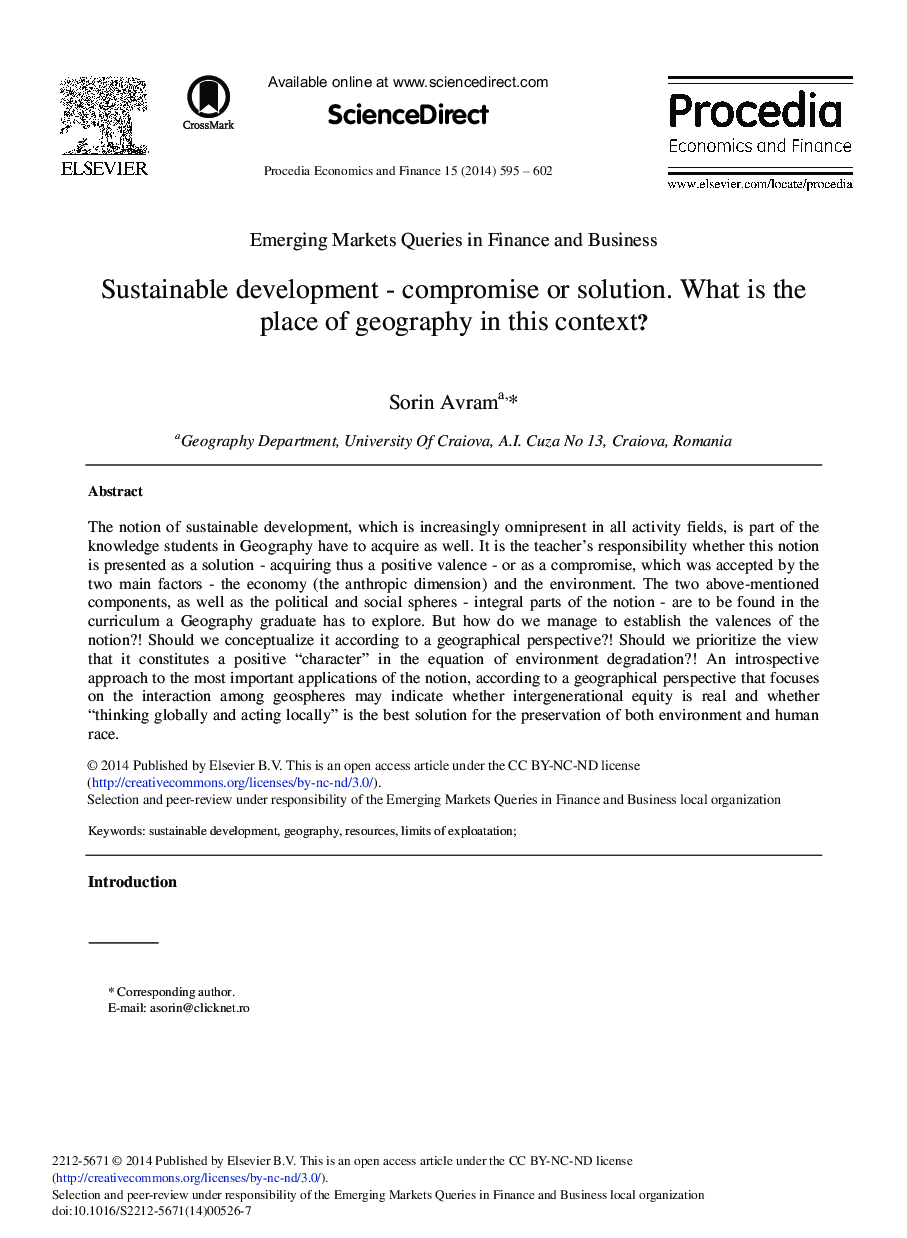| Article ID | Journal | Published Year | Pages | File Type |
|---|---|---|---|---|
| 983047 | Procedia Economics and Finance | 2014 | 8 Pages |
The notion of sustainable development, which is increasingly omnipresent in all activity fields, is part of the knowledge students in Geography have to acquire as well. It is the teacher's responsibility whether this notion is presented as a solution - acquiring thus a positive valence - or as a compromise, which was accepted by the two main factors - the economy (the anthropic dimension) and the environment. The two above-mentioned components, as well as the political and social spheres - integral parts of the notion - are to be found in the curriculum a Geography graduate has to explore. But how do we manage to establish the valences of the notion?! Should we conceptualize it according to a geographical perspective?! Should we prioritize the view that it constitutes a positive “character” in the equation of environment degradation?! An introspective approach to the most important applications of the notion, according to a geographical perspective that focuses on the interaction among geospheres may indicate whether intergenerational equity is real and whether “thinking globally and acting locally” is the best solution for the preservation of both environment and human race.
